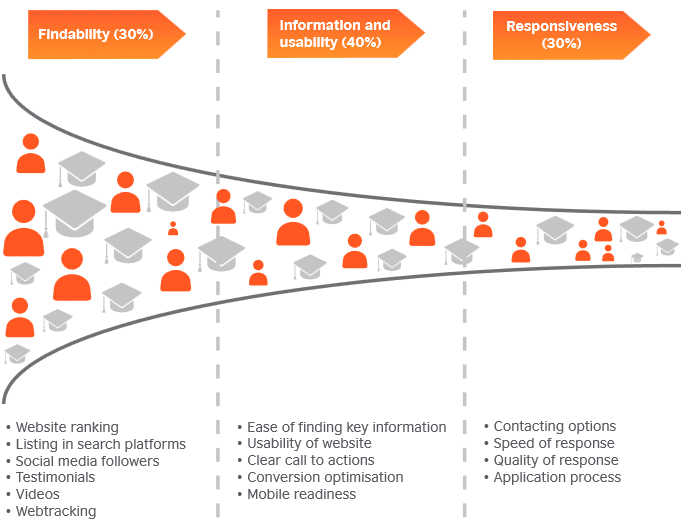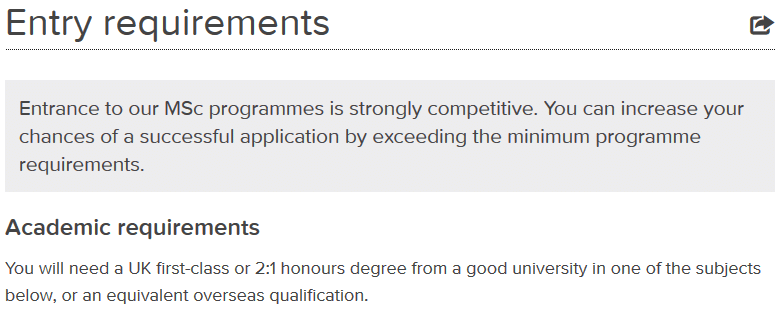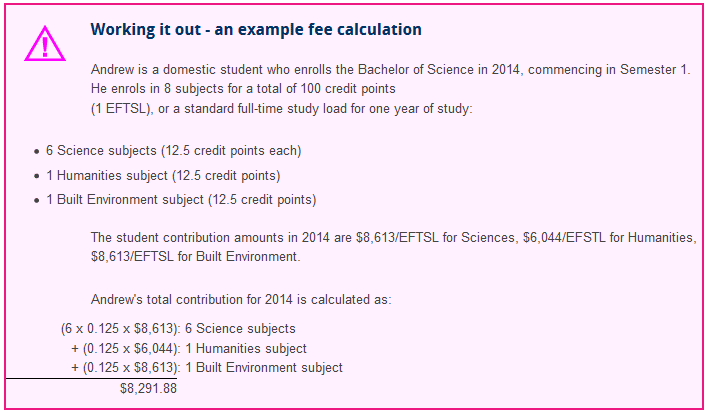How do you look to prospective students online?
What kind of experience are prospective international students having when they consider applying to your institution? What should institutions be doing to make their websites more helpful to international students (and thus drive the conversions to enquiries and applications)? These were two of the big discussion points at a recent EAIE (European Association for International Education) 2014 conference session in Prague called “Undercover agents: student insights into university recruitment processes.” The session was chaired by Stephen Carey of the British Council and featured a presentation by Edwin van Rest of StudyPortals. Mr van Rest presented findings from a new study, “The world’s top 500 universities through student eyes,” a joint research effort carried out by StudyPortals, the British Council, and IELTS.
Through student eyes
Mr van Rest’s study was conducted by international student-researchers, who:
- Analysed and evaluated the official homepages of 500 top-ranked universities in terms of their relevance to international student decision making processes;
- Then assumed the role of “mystery shoppers,” using aliases and accompanying email addresses to conduct all the activities one would if one were an international student interested in finding out whether an institution was the right fit for them.
The goal in the first phase was mainly to determine how easily the students could find the information they wanted on each university’s website. The second phase measured how responsive each institution was to student queries.
The research process resulted in a score (out of 100) for each institution. Scoring was based on a set of 40 ranking factors, grouped broadly under headings of “findability”, “information and usabilty”, and “responsiveness”.

- UK and Irish universities as well as those in Benelux (Belgium, The Netherlands, and Luxembourg) and Scandinavia (Norway, Denmark, Sweden) received the best ratings.
- Looking across all surveyed institutions, students could most easily find details about degree level and type, as well as programme email addresses, whereas information on programme accreditation and student testimonials were more difficult to find.
- More than half (57%) of the world’s top 500 universities responded to enquiries within one day, but almost a quarter (21%) did not respond to enquiries at all. Canadian, Swedish, and Dutch institutions were the most likely to respond within a day, while Spanish and Chinese ones were less prompt.
- Of those institutions that did initially reply, 68% did not send a follow-up email or reminder.
In his presentation, Mr van Rest provided examples of university website pages where international students would find it very difficult to find the information they were looking for. The web page shown below, for example, leaves students to wonder what degree is required for admission.


- Understand who you are and what you offer;
- Contact you for more information;
- Contact you easily (e.g., without hunting for country codes, and via all your contact points);
- Understand if they are likely eligible candidates for your programmes.
Mr van Rest advocated a clean, logical website structure “ideally focused on prospective students” as well as making the website mobile-ready and responsive. Also key in the findings was the inadequate handling of student enquiries by some institutions. Mr van Rest also provided recommendations on this subject, the most pressing of which were that institutions should consider using an enquiry form, but that they should only allow “open” questions (e.g., individual, unstructured questions from students) if they have the capacity to answer them. The student can only feel frustrated if he/she is invited to ask a question and then never gets an answer. Of course, the better conceptualised a website (i.e., designed with students in mind, and their informational needs), the lower the likelihood that the institution will have to answer basic questions. Mr van Rest suggested including a link – placed before the “Submit” button – on the enquiry form to a FAQs section; the student may then read this and discover the answer, negating the need to send the enquiry. Students also want to know that their enquiry emails have been received. For this reason, Mr van Rest says it’s important to inform the student that it has been, and to respond promptly. He makes an important suggestion: “Increase number of contact moments by following up with a reminder within a week or so.”
Getting to best practices
There are a number of implications for institutions arising from the research findings. The report certainly underscores the importance of a strong response mechanism for student queries, both automated and otherwise. It also speaks to the value of a website architecture and web content that is strongly oriented to prospective students. For additional background on best practices in web strategy and online marketing, please see some of our recent posts on the subject:
- Test everything: the business case for A/B testing online
- Search trends playing an increasing role in international education marketing
- Marketers will focus on mobile more than ever before in 2014
- Mobile marketing for educators: driving engagement and prospect conversion
- The art of listening: better results start with understanding your customer
- Secrets to a successful content marketing strategy
Smart business principles are timeless
Overall, the session at EAIE underscored the need for institutions to adopt a strong customer orientation – that is, a strong orientation to prospective students and their families – and to be responsive and agile. In an era of information abundance and always-connected, empowered prospective students, the challenge is ever more for international educators to make it easy for students to find your institution and to find the information they need, and, ultimately, to make it equally easy for prospects to take those next steps into your enquiry and admissions processes.
















